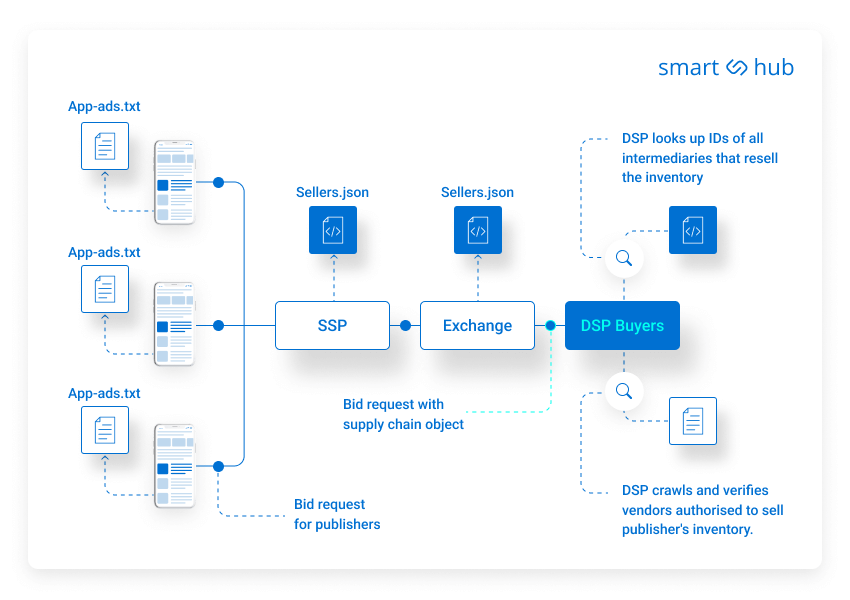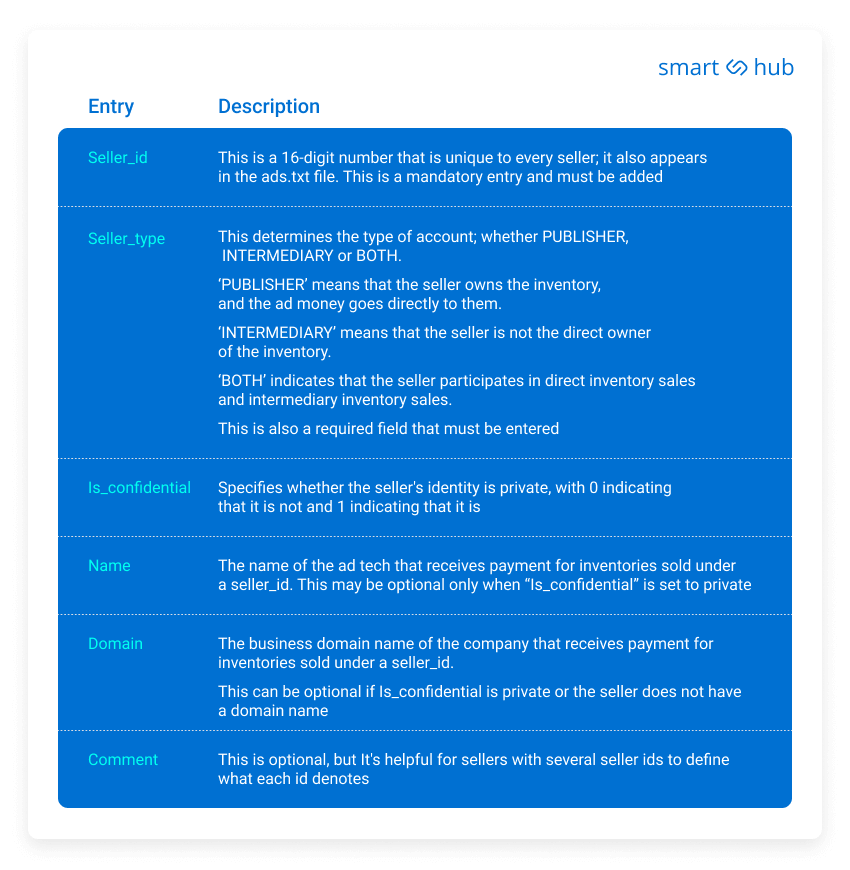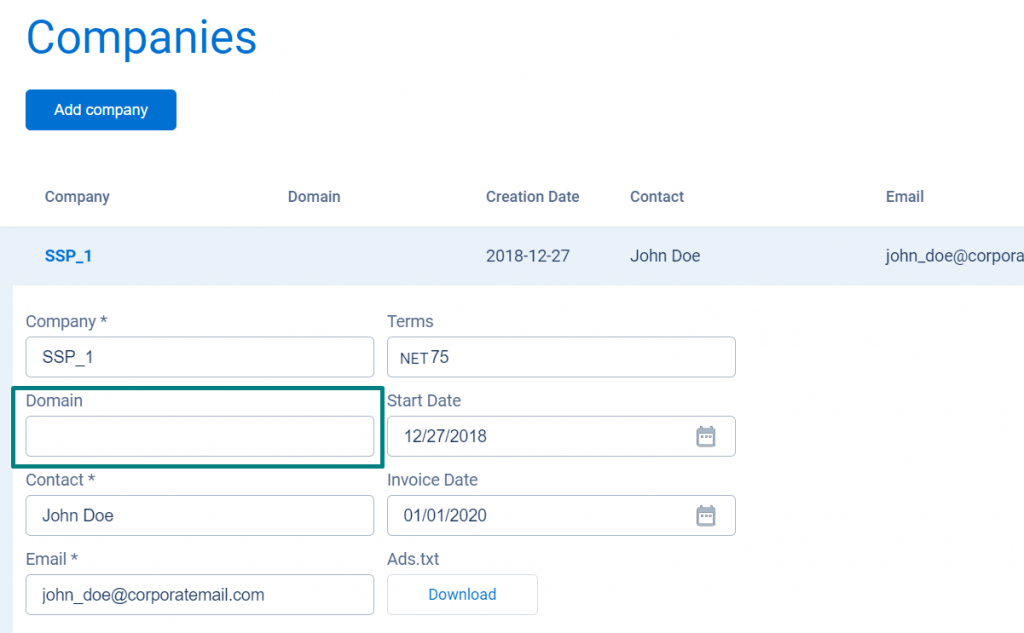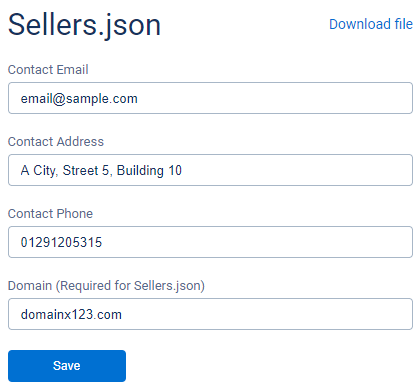For many marketers, ad fraud tops their list of challenges, and this is no surprise. While in 2023, the costs related to digital ad fraud worldwide were estimated at over $80 billion, this figure is projected to exceed $170 billion by 2028, which is around 14% annually (and this is huge).
However, stakeholders in the digital advertising industry are continually fighting back and coming up with measures to eradicate or minimize the frequency of ad fraud to the bare minimum. Do not hesitate to explore our article about the top programmatic advertising trends.
Over the years, several standards have been implemented to combat fraud; one of such mechanisms is the sellers.json, introduced in 2019 by the Interactive Advertising Bureau (IAB) as a protocol that would complement other existing standards like the ads.txt.
In this guide, we will get sellers.json explained and review its benefits for SmartHub owners.
Sellers.json is a file that contains a list of all digital ad sellers who have been approved by an ad tech platform (typically SSPs and ad exchanges). The JSON file, hosted on the supply-side platform, includes all the information necessary for digital buyers to identify the sellers with whom they transact, including direct sellers and intermediaries. The sellers.json functions together with the SupplyChain object.
With the SupplyChain object, media buyers can identify the entity or parties involved in selling or reselling inventory (information is contained in the bid request). Having this information is necessary to promote ad tech transparency measures and give buyers more control over how they spend their ad budgets because it makes them aware of the supply chain, the parties involved, and the bidding process. The ultimate goal of the sellers.json standard is to make ad purchasers aware of who they are dealing with and to make media trading more transparent.
Sellers.json integration became necessary because the supply side of the programmatic system is sometimes inundated with various resellers and intermediaries, resulting in a long, complex chain of inventory supply. Without google sellers.json, it becomes easy for fraudsters to join the complex digital advertising supply chain and fleece unsuspecting buyers of their ad money.
Sellers.json is often confused with ads.txt, but they are not the same thing, even though they share some similarities.

The sellers.json serves as an authenticating resource that identifies all the ad tech participants involved in a bidding auction selling process. The SSPs and ad exchanges are mandated to list all their approved resellers and publishers, including adding other relevant information like the seller’s ID that enables easy identification. Each seller ID must be matched to an individual reseller or publisher, implying that each reseller or publisher cannot have more than one seller’s ID.
The sellers.json file might include multiple fields, some of which are required and others dependent on what the seller wants to share.
The following entries should be included in the seller’s.json file:

Ads.txt is a text file that publishers create to combat ad fraud. It allows them to specify authorized sellers for their inventory, providing programmatic advertising transparency for buyers to verify legitimate vendors. This file is publicly accessible, enabling buyers to confirm they are dealing with an approved seller according to the publisher’s specifications.
In comparison, sellers.json serves as an extension of ads.txt, but it’s hosted on the website of the supply-side platform (SSP) or ad exchange. Its purpose is to address a potential limitation of ads.txt. While ads.txt focuses on authorized inventory sellers declared by publishers, it may not capture all legitimate resellers, particularly those who buy and resell inventory on exchanges. Sellers.json provides a more comprehensive view by disclosing all the parties involved in selling a publisher’s ad inventory, including intermediaries who may not have a direct connection to the publisher.
By leveraging the sellers.json list, advertisers can gain insights into the complete digital advertising supply chain and identify all participants in the transaction, ensuring programmatic advertising transparency and minimizing the risk of fraudulent activities. This additional level of detail helps marketers make informed decisions about their ad purchases and validates the legitimacy of the entities involved in the advertising ecosystem.
Explore more information describing ads.txt vs sellers.json.
When deciding whether to use sellers.json and ads.txt, or both, publishers and buyers should consider their specific needs and goals. So, json vs txt: here are some insights to help determine the appropriate implementation:
Ads.txt only: If the primary concern is to combat ad fraud by ensuring that only authorized sellers are allowed to sell the publisher’s ad inventory, then implementing ads.txt alone can be sufficient. This approach is suitable when there is no requirement for a granular view of the supply chain or when the publisher doesn’t rely heavily on intermediaries.
Sellers.json only: If the publisher wants to gain a more detailed understanding of the supply chain and the entities involved in selling their ad inventory, implementing sellers.json becomes important. This is particularly relevant when the publisher works with numerous intermediaries or resellers and wishes to validate their legitimacy. Sellers.json validator provides additional insights and programmatic advertising transparency beyond what ads.txt offers.
Both ads.txt and sellers.json: Implementing both ads.txt and sellers.json is ideal for publishers and buyers seeking maximum transparency and ad fraud prevention. Ads.txt ensures authorized sellers are designated, while sellers.json provides a deeper view into the digital advertising supply chain, capturing intermediaries and all parties involved in selling the ad inventory. This combination allows for comprehensive verification and minimizes the risk of fraud or unauthorized activities.
Here are some important benefits of sellers.json you should be aware of.
Advertisers and DSPs can identify lengthy digital advertising supply chains and avoid them. The more resellers are on a supply path, the more costly it would be to buy the end seller’s (publisher) inventory. Besides, every buyer hopes to get the best value for their budget, so it becomes important to examine the sellers.json to identify more efficient supply chains.
The multiplicity of actors on the supply side of programmatic advertising led to complexities and a lack of clarity on who the real ad tech supply-side partners are. Sellers.json alongside ads.txt was initiated to provide some clarity and amplify ad tech transparency measures on the parties involved in selling an inventory. With sellers.json, advertisers can clearly identify selling partners and gain a better understanding of the entire ad-buying process.
Publishers also benefit from sellers.json because it allows them to receive their entire income by identifying inventory-selling partners who have a smaller and more efficient digital advertising supply chain. If the supply chain is extensive and includes a lot of needless intermediaries, the publisher will lose a significant portion of inventory revenue to these partners.
Sellers.json promotes trust and brand safety by enabling advertisers to make informed decisions about the entities they work with. With authorized inventory sellers, advertisers can ensure that their sellers ads are being displayed in environments that align with their brand values and avoid potential association with fraudulent or low-quality inventory sources.
Sellers.json aligns with industry efforts to increase programmatic advertising transparency and combat ad fraud. Its implementation demonstrates a commitment to best practices and helps build trust among industry stakeholders.
At the same time, despite the positive impact of sellers.json on digital advertising transparency, there are certain limitations.
If the information provided in the sellers.json or ads.txt file is incomplete or inaccurate (unfortunately, human error may occur), the sellers.json verification process can fail. Additionally, for small publishers selling their inventory via multiple channels, it can be complicated to ensure their accurate representation in a file.
Both sellers.json and ads.txt files require regular and thorough maintenance. This process can be resource-intensive, but if it’s neglected, fraudulent activities may take place.
One more potential challenge is varying adoption rates among publishers. Despite all the benefits, sometimes the adoption may occur only when media buyers demand it.
In order to set up Sellers.json, you need to select the company in the Companies section. Pay attention to the Domain column (but note that some companies don’t have domains):

Companies without domains appear in sellers.json with an ID but without the domain.
Open the profile of each SSP company without the domain, and add it:

Then, go to Settings.
To set up the sellers.json correctly on SmartHub, you need to fill in the fields with your contact details and main company domain.

Click Download File and move to the next step: place the file on your domain.
After the file is downloaded, in the settings of sellers.json, it should be placed on the company domain.
Together, the ads.txt and sellers.json files should have unified IDs that are passed in the Schain object in the requests that can be checked on public domains for inventory transparency of the market players like advertisers, publishers, and resellers.
Sellers.json must contain records listed as JSON objects:
{
“contact_email”:”smarthub@smart-hub.io”,
“contact_address”:”New York 5555″,
“version”:1,
“identifiers”: [
{
“name”:”TAG-ID”,
“value”:”a23a4238a0b927520dcc519a6f55841b”
}
],
“sellers”: [
{
“seller_id”:”7ceab3a1649fda2b3ff8d02edfd5659f”,
“seller_type”:”INTERMEDIARY”,
“name”:”SSP_1_Banner_12″,
“domain”:”Ssp1.com may be for sale – PerfectDomain.com “
},
{
“seller_id”:”69add1e107d7f7d035d7dafd4342e1ca”,
“seller_type”:”INTERMEDIARY”,
“name”:”SSP_5_Video”,
“domain”:”ssp5.com”
}
]
}
The main object contains the contact info of the sellers.json issuer, the version of the file, and identifiers, such as TAG-ID.
The sellers’ array must contain objects for each partner. Such an object consists of the seller_id, seller_type, seller_name, and domain fields. The is_passthrough field is optional.
If everything is correct, place the file in the root directory of your main domain, so your partners can scan the file and scan other sellers.json files down the supply chain.
For example, if the platform URL is company.com, sellers.json should be added to the http://company.com domain, so the resulting address should be company.com/sellers.json.
If set, each bid request will contain the Schain object that reveals the entire supply chain. The request will look like this:
“bidrequest” : {
“id”: “BidRequest2”,
“app”: {
“publisher”: {
“id”: “aaaaa”
}
}
“source”: {
“ext”: {
“schain”: {
“ver”:”1.0″,
“complete”: 1,
“nodes”: [
{
“asi”:”directseller.com domain name is for sale. Inquire now. “,
“sid”:”00001″
“rid”:”BidRequest1″,
“hp”:1
},
{
“asi”:”Reseller Solutions at Name.com “,
The Schain object, as shown above, contains the specification version, the completion flag, and an array of nodes. Each node corresponds to a reseller that is a link in a supply chain. The first node represents the initial advertising system that received the request.
Let’s take a closer look at the object. It contains the following fields:
Note: This should be the same value as used to identify sellers in an ads.txt file if one exists.
Note: This field is required and should always be set to 1.
Here is an example of building a supply chain object:
The final supply chain object will look like this:
“nodes”: [
{
“asi”:”http://ssp1.com “,
“sid”:”website1com-id-within-ssp1″
“rid”:”BidRequest1″,
“hp”:1
},
{
“asi”:”http://adx1.com “,
“sid”:”id-of-ssp1-in-adexchange1″
“rid”:”BidRequest2″,
“hp”:1
},
{
“asi”:”reseller2.net”,
“sid”:”adex1-id-within-reseller2″
“rid”:”BidRequest3″,
“hp”:1
}
]
For ad exchange owners, ensuring transparency and preventing ad fraud is a crucial task to keep their platforms effective. Dealing with it on your own can be challenging, but SmartHub white-label ad exchange solution has already solved the issue for you.
The platform supports the generation of both sellers.json and ads.txt files and is compliant with such data processing standards and privacy regulations as GDPR, TCF 2.0, CCPA, and COPPA. Additionally, the solution is equipped with a variety of fraud detection scanners.
This way, by choosing SmartHub, you get a safe marketplace within a week (or a bit more in case of specific requirements) and can start earning on media trading straight away.
Sellers.json was initiated to encourage transparent dealings between media buyers and sellers, also enabling buyers to identify fraudulent supply chains. While this is an effective tool that has proven beneficial, advertisers and publishers should utilize it together with other ad fraud prevention mechanisms to optimize the entire programmatic ad value chain and reduce ad-related losses.
Ad exchange owners should also care for transparency, and with SmartHub this task gets much simpler. Instead of building a safe environment for supply and demand partners from scratch, you can leverage a ready-to-use solution under your own brand.
Want to Learn More?
Want to Learn More?
We'll get back to you very soon.